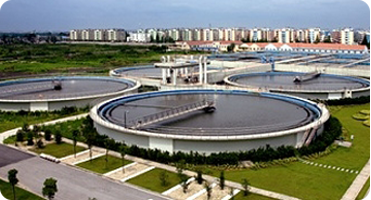Polyaluminium Chloride (PAC) Product Introduction
I. Overview
Polyaluminium Chloride (abbreviated as PAC), also known as basic aluminium chloride or polyaluminum chloride, is a highly efficient and broad-spectrum inorganic polymer coagulant.
Compared to traditional inorganic coagulants (such as aluminum sulfate, ferric chloride), PAC offers the following significant advantages:
-
Highly Effective Flocculation: Forms large, dense, and fast-settling flocs, making treatment efficiency much higher than traditional coagulants.
-
Strong Adaptability: More adaptable to changes in raw water temperature, pH, and turbidity, providing stable treatment results.
-
Dosage Economy: Requires over 30% less product than traditional coagulants like aluminum sulfate to achieve the same treatment effect.
-
Low Corrosivity: Its aqueous solution is far less corrosive than ferric chloride, causing less damage to equipment and piping.
-
Low Residual Aluminum: Results in lower residual aluminum content in treated water, beneficial for drinking water safety.
-
Wide Application Range: Suitable for treating various types of wastewater and is an excellent agent for drinking water treatment.
Due to its superior performance, PAC has become the most technologically mature and widely sold inorganic polymer coagulant on the market, and is one of the preferred core chemicals for both clean and wastewater treatment.
II. Content Differentiation and Types
The core quality indicators of PAC products are the Aluminium Oxide (Al₂O₃) content and the Basicity. Based on these indicators, PAC can be divided into industrial grade and drinking water grade, with different models derived.
1. By Form:
-
Liquid PAC: Typically a light yellow to yellowish-brown liquid. Higher transportation costs, but convenient to use as it requires no dissolution, suitable for users near production sites. Al₂O₃ content is generally around 10%-12%.
-
Solid PAC: Available in powder or granular form. Yellow to golden brown. Easy to transport and store, it is the mainstream product on the market. Requires dissolution and dilution with water before use.
2. By Aluminium Oxide (Al₂O₃) Content (for solid products):
This is the most common and intuitive way to differentiate.
| Type / Grade | Aluminium Oxide (Al₂O₃) Content | Appearance | Primary Application Areas |
|---|---|---|---|
| Industrial Grade | 26%-28% | Dark brown, tan granules/powder | Industrial wastewater treatment (e.g., printing/dyeing, electroplating, coal washing), urban sewage treatment, circulating water treatment. |
| Medium Grade | 29%-30% | Yellowish-brown, golden yellow granules/powder | Wide range of uses, a common type for industrial wastewater and some less demanding water treatment plants. |
| High Grade | 30%-31% | Golden yellow, light yellow granules/powder | High-standard industrial water supply, urban drinking water purification, pretreatment of high-turbidity water. |
| Drinking Water Grade | ≥31% | White, milky white, or light yellow powder | Strictly for drinking water treatment. Produced using high-quality aluminum hydroxide and hydrochloric acid, with very low heavy metal content, complies with national drinking water standards (e.g., GB 15892-2020 in China). |
3. Key Indicator: Basicity
Products with different basicity levels can be used to adjust the pH of different wastewaters.
III. Application Areas
PAC has extremely wide applications, covering almost all water treatment scenarios requiring solid-liquid separation.
1. Drinking Water Treatment
-
Used for purifying surface water from rivers, lakes, and reservoirs, effectively removing suspended solids, colloids, color, turbidity, algae, and microorganisms.
-
Serves as the core coagulant in water treatment plants, ensuring effluent meets national drinking water sanitation standards.
2. Urban Sewage Treatment
-
Used in primary treatment (enhanced primary) and post-biological treatment (advanced phosphorus removal) in sewage treatment plants, efficiently removing COD (Chemical Oxygen Demand), BOD (Biochemical Oxygen Demand), and Total Phosphorus (TP).
3. Industrial Wastewater Treatment
-
Textile/Dyeing Wastewater: Notable for its decolorization effect, effectively removing dyes and aids.
-
Paper Mill Wastewater: Removes fibers, fillers, and colloidal substances, allowing for recovery of useful materials.
-
Electroplating/Metallurgical Wastewater: Removes heavy metal ions and fluorides.
-
Oily Wastewater: Breaks emulsions and removes oil, e.g., in coal washing wastewater, oilfield injection water treatment.
-
Leather, Food, Pharmaceutical Wastewater: Removes organic pollutants and suspended solids.
4. Other Areas
-
Precision Casting: Used as a hardening agent.
-
Pharmaceuticals/Cosmetics: Used as a raw material.
-
Paper Sizing: Used as a sizing precipitating agent.
-
Sludge Dewatering: Used as a conditioning agent to improve sludge dewatering efficiency.
IV. Usage Methods and Precautions
-
Preparation: Solid products are typically prepared as a 5%-10% solution (by weight), meaning 50-100 kg of solid PAC is added to 1 ton of water. Liquid products can be fed directly or diluted before use.
-
Dosing: Fed into the water via a dosing pump and rapidly mixed with the raw water through agitation.
-
Precautions:
-
Jar tests should be conducted based on the raw water quality to determine the optimal dosage.
-
When preparing solutions, add water to the dissolution tank first, then slowly add the powder while stirring constantly to prevent clumping.
-
Store in a dry, rain-proof, and well-ventilated area. The shelf life for solid products is generally 2 years.
-
We hope this introduction is helpful. For more advice on PAC selection for specific water treatment applications, please feel free to inquire further.


